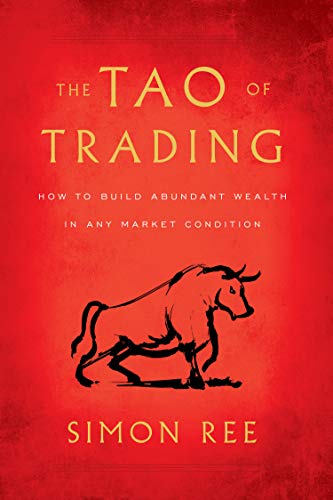
A very common fear among people who are retired or are nearing retirement is “how will I earn enough money to support myself in retirement?”
Why is this a common fear?
Because in a world filled with financial advice, financial news, and bountiful access to free financial data, very few have enjoyed financial success.
Conventional wisdom when it comes to investing and growing wealth has failed most of us. I’ll let the dismal statistics speak for themselves.
A Gallup survey in May 2017 showed that 75% of workers in the US want to retire by the age of 60, yet only 25% of them think they will be able to.
According to a study by the US Department of Commerce, only 5% of all Americans are financially independent by age 65. Fully 75% of retirees are forced to depend on family, friends, and social security for sources of income, and 51% of retirees have an income of less than $10,000 per year.
Heck, according to Bankrate’s Financial Security Index, most Americans say they couldn’t cover a $1,000 emergency from savings.
The “traditional” retirement plan
Being a self-funded retiree used to be more straightforward.
Save up a big enough nest-egg, then invest the money in a certificate of deposit (CD) [NB use the term “term deposit” on non-US publications] paying 6% per annum interest…and live off the interest.
This game plan assumed:
1) You were able to save up a large enough nest-egg; and
2) You could earn a decent rate of interest in your deposit
Since the 20008 financial crisis, monetary policy has screwed the retirement plans of savers. These days you’re lucky if you can earn 0.8% interest on a CD.
Which means even if you managed to save a $1 million nest-egg, your CD is only going to pay you $8,000 per year. That’s a meagre reward for 40 years of toil.
So…what is a retiree who needs to generate a living wage from their savings to do?
Well, many have been literally forced to take on more and more risk. With interest rates close to zero – and bond yields not much higher – many have been forced to invest more and more of their savings in the stock market. Stocks have been the only investment option offering an attractive return over the past decade.
Money that is seeking a return has therefore been driving up stock prices to such an extent that, right now, stocks are the most expensive they have ever been according to Warren Buffett’s favorite market indicator, the ratio of stock market capitalization to GDP.
Retirees – or those approaching retirement – are therefore left with some grim alternatives.
Should they invest in stocks at an all-time high valuation, at a time when global economic growth looks to be rolling over following the post-pandemic recovery?
Or should they invest in bonds that are also looking incredibly expensive and offering only meagre yields?
Perhaps they should they stick the money in the bank and earn sub-1% interest?
I’m sure you’ll agree, all of these options sound risky and unappealing.
There is a better option
What if there was a way to earn, instead of 1% per year, potentially 5% per month?
What if there was a way to profit from the stock market no matter whether it rises or falls in the future?
What if this could all be done in a way where your downside risk is limited but your upside returns are potentially unlimited?
The great news is that all of this is possible. If you are prepared to acquire the knowledge, and then complete the ongoing work of finding high-probability trade setups while effectively managing your risk, you can enjoy exceptional returns.
Options are your best option
If you are serious about growing your wealth or creating an income stream in retirement, no other financial instrument has the flexibility that options offer us.
If you’re new to options, they are the greatest risk management tool in the world of finance.
Options can be used to not only manage risk, but also to generate fantastic returns with limited downside.
There are only two kinds of options: Call options -which we use to make money on rising stock prices. And put options – which we use to profit from falling stock prices.
A call option is like a rental agreement on a stock. When you buy a call option, you get the benefit of “renting” the stock of your choice for a set period of time, without the significant cost associated with a purchase. You pay a small fee (called premium) to “rent” the stock, and this premium is the maximum amount of money you can lose.
If the stock price rises, you can sell the option for more premium than you initially paid (often significantly more).
A put option is like buying an insurance policy over a stock. You pay a small amount of premium up-front (like insurance premium), and If something bad happens to the stock (in this case, the stock price falls) you can make money on the “insurance policy” (i.e. the put option).
That’s right, with options, we can make money no matter whether stock prices are rising or falling. A feature that is likely to be of increasing relevance in the future, given how expensive stocks look today.
What’s the risk?
If options have a downside, it is that they have an expiration date. Much like rental agreements and insurance policies. For example, if you buy a call option on a stock and it doesn’t rise by a certain amount before expiration, you could lose money on your call option.
Because of this, it is particularly important to be able to identify high-probability moments in time when a move up – or down – in a stock becomes a strong likelihood. Identifying these moments in time is not difficult, but it does require some education.
Simon Ree is the author of the #1 Amazon best selling book The Tao Of Trading: How to build abundant wealth in any market condition. He is also the founder of Tao Of Trading Ltd, publisher of world-leading online education.
Simon’s online courses have taught hundreds of people how to navigate the stock market with confidence and how to trade options safely and successfully. Reading this book will be your first important step towards getting into the fast lane to financial prosperity.
Features
BadenBower
https://www.badenbower.com
news@badenbower.com

